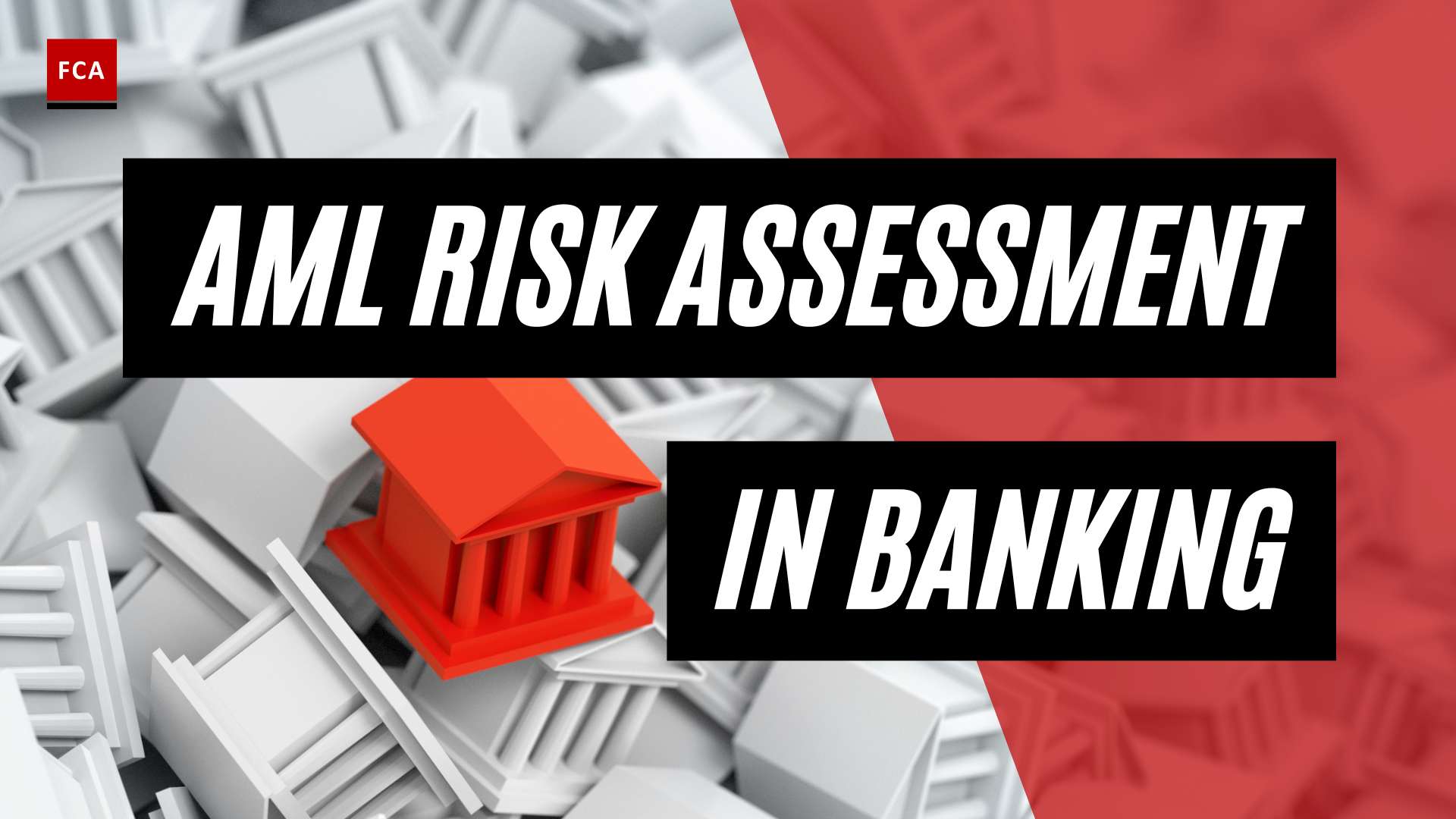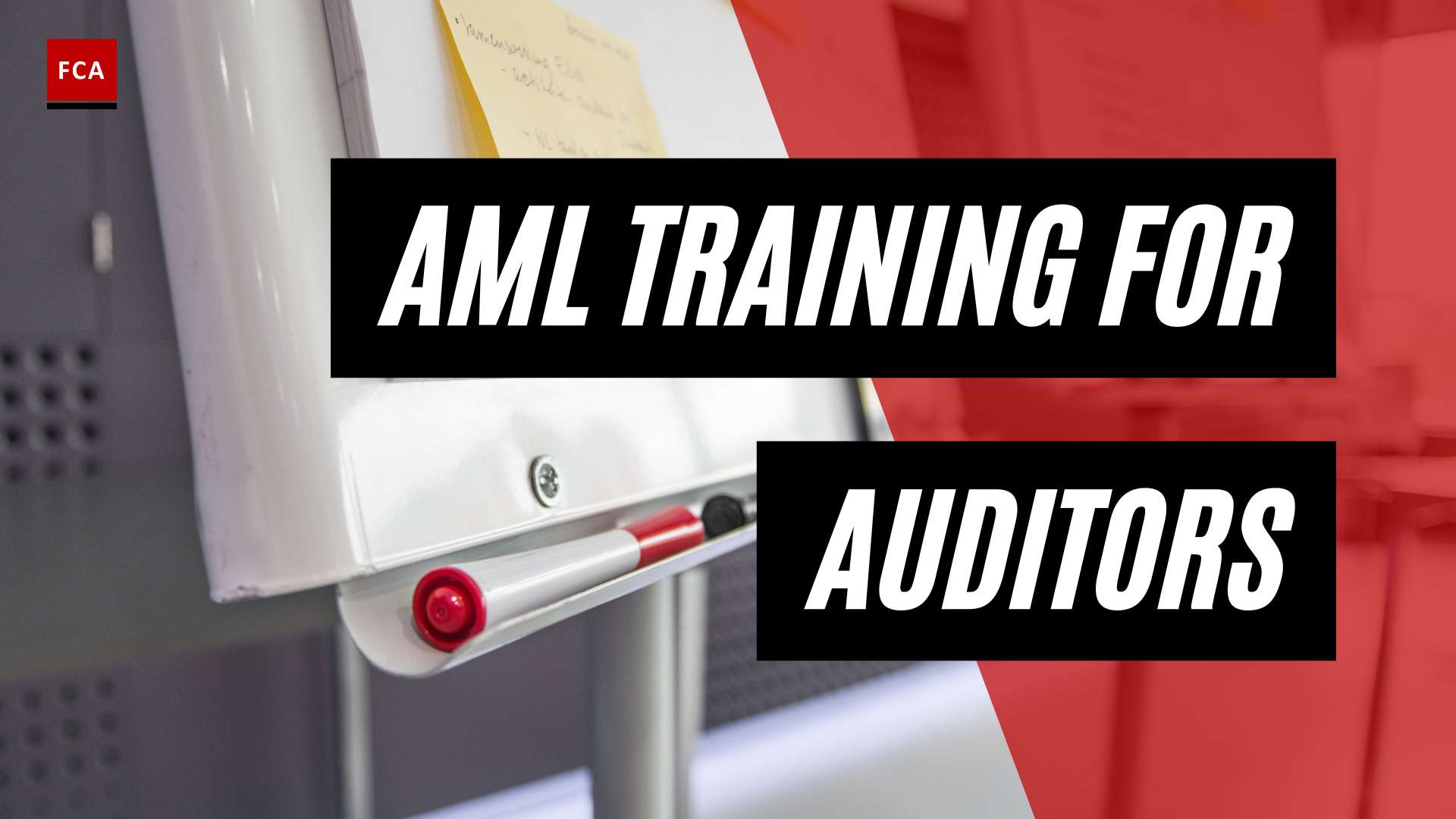Understanding AML Reporting Obligations
Navigating the complex landscape of Anti-Money Laundering (AML) reporting obligations is a crucial task for financial institutions. The regulatory environment in the United States is primarily shaped by two key entities: the Bank Secrecy Act (BSA) and the Financial Industry Regulatory Authority (FINRA).
The Role of the Bank Secrecy Act
The Bank Secrecy Act (BSA), enacted in 1970, plays a pivotal role in establishing the foundation for AML reporting obligations in the United States. Financial institutions are required by the BSA to establish Anti-Money Laundering (AML) compliance programs. These programs are designed to meet AML reporting obligations, such as filing Suspicious Activity Reports (SARs) and Currency Transaction Reports (CTRs) (FDIC).
SARs and CTRs form a significant part of the AML reporting framework, providing law enforcement agencies with vital information to detect and deter money laundering, terrorist financing, and other illicit financial activities. For more information on how technology can streamline this process, check out our article on AML reporting software.
Reporting Obligations under FINRA
The Financial Industry Regulatory Authority (FINRA) further expands on the AML reporting obligations outlined in the BSA. FINRA requires firms to establish and implement an anti-money laundering (AML) program to comply with the Bank Secrecy Act (BSA) and its implementing regulations.
As part of their AML obligations, member firms are mandated to report suspicious activities such as potential money laundering, terrorist financing, or other fraudulent activities to the appropriate authorities (FINRA). These reporting procedures form an essential component of a comprehensive AML program.
Furthermore, AML obligations for member firms also involve verifying the identity of customers, conducting ongoing monitoring of transactions, and maintaining records of customer information and transactions to prevent money laundering and financial crimes (FINRA). This aspect of AML obligations highlights the importance of robust customer due diligence procedures.
Understanding and adhering to AML reporting obligations under the Bank Secrecy Act and FINRA regulations is not just a legal requirement but also a necessity for maintaining the integrity of financial institutions and the broader financial system. For more insights into AML reporting, including the relevant regulations and thresholds, explore our other articles on the topic.
Types of AML Reports
Abiding by Anti-Money Laundering (AML) regulations requires producing specific types of reports for financial institutions. These AML reporting obligations are typically dictated by the Bank Secrecy Act (BSA) and Financial Transactions and Reports Analysis Centre of Canada (FINTRAC).
Suspicious Activity Reports
One of the main types of AML reports is the Suspicious Activity Report (SAR). It’s a document that financial institutions must file with the Financial Crimes Enforcement Network (FinCEN) whenever they identify any suspicious or potentially suspicious activity. Suspicious transactions in banking and financial institutions can be related to fraud, money laundering, terrorist financing, or other illegal activities.
Examples of suspicious activities that warrant a SAR include, but are not limited to:
- Money laundering
- Cash transaction structuring
- Check fraud, check kiting
- Wire transfer fraud
- Mortgage and consumer loan fraud
- Misuse of position (self-dealing)
- Identity theft or fraud
- Terrorist financing
SARs must be filed through the BSA E-Filing System or by submitting FinCEN Form 111.
Other Mandatory Reports
In addition to SARs, there are other mandatory AML reporting obligations that financial institutions must adhere to. These include Currency Transaction Reports (CTRs) as per the BSA, as well as Suspicious Transaction Reports, Terrorist Property Reports, and Large Cash Transaction Reports as per FINTRAC (FINTRAC).
CTRs are required for any transactions that exceed $10,000 in a single business day, whether they are conducted as a single transaction or a series of related transactions. It’s crucial to note that attempts to evade this threshold through structuring transactions can itself be a reportable activity.
The need for Suspicious Transaction Reports, Terrorist Property Reports, and Large Cash Transaction Reports arises from specific activities or situations that raise concerns about potential money laundering, terrorist financing, or other financial crimes.
To meet these AML reporting obligations effectively, financial institutions often leverage AML reporting software and AML reporting tools to automate and streamline the reporting process. This not only ensures compliance but also enhances the efficiency and accuracy of their AML efforts.
Understanding the types of AML reports and their requirements is a key aspect of fulfilling your AML reporting obligations. This knowledge, combined with the right tools and processes, can help your institution maintain compliance and contribute to the global fight against financial crime.
Implementing AML Programs
To comply with AML reporting obligations, firms should establish and implement robust anti-money laundering (AML) programs. These programs encompass a range of procedures and internal controls designed to identify, monitor, and report suspicious activities that could potentially indicate money laundering or other financial crimes (FINRA).
Role of an AML Compliance Officer
A key component of a successful AML program is the designation of an AML Compliance Officer. This individual is responsible for overseeing the firm’s AML program and ensuring that the firm complies with all AML regulation requirements. This includes filing Suspicious Activity Reports (SARs) and ensuring that the firm’s policies, procedures, and internal controls are effectively addressing its AML risks (FINRA).
The AML Compliance Officer’s responsibilities also include:
- Ensuring that the firm’s AML program is updated as necessary to reflect changes in requirements, business operations, and risk exposure
- Providing ongoing training to appropriate personnel on their AML responsibilities
- Conducting independent testing of the firm’s AML program to verify its effectiveness
- Maintaining accurate and up-to-date records that document the firm’s AML program’s implementation, including relevant policies, procedures, customer information, and transaction records (FINRA)
Importance of Customer Due Diligence
Customer Due Diligence (CDD) forms an integral part of an effective AML program. Firms are required to verify the identity of their clients, assess the purpose of the account, and monitor transactions to detect and report suspicious activities that could indicate potential money laundering (FINRA).
The CDD process involves:
- Collecting and verifying customer identification data
- Understanding the nature and purpose of the customer relationship
- Assessing customer risk factors and conducting ongoing monitoring for reporting suspicious transactions
- Maintaining records of customer identification and transaction data for at least five years
Implementing robust AML programs and fulfilling AML reporting obligations is not just a regulatory requirement, but also a crucial step towards preventing financial crimes. By leveraging AML reporting tools and adhering to best practices, firms can ensure that they remain compliant while safeguarding the integrity of the financial system.
Consequences of Non-compliance
Failing to comply with AML reporting obligations can have serious implications for financial organizations. This can range from legal and financial repercussions to reputational damage and loss of trust.
Legal and Financial Repercussions
Regulatory authorities, such as FinCEN in the United States, closely monitor financial institutions’ adherence to AML reporting obligations and have the power to impose fines, sanctions, and enforcement actions for violations. These actions aim to ensure that institutions adhere to AML regulations and prevent money laundering and terrorist financing activities.
Non-compliance with AML reporting obligations can also lead to significant legal implications. This includes investigations by law enforcement agencies, prosecutions of individuals or entities involved in money laundering, and potential criminal charges for facilitating illicit financial transactions.
In extreme cases, financial organizations can be barred from doing business as a result of severe violations. The table below provides an overview of potential legal and financial repercussions.
| Repercussion | Explanation |
|---|---|
| Fines | Monetary penalties imposed by regulatory authorities |
| Sanctions | Prohibitions on specific types of business activities |
| Enforcement Actions | Legal actions taken by regulatory authorities to enforce compliance |
| Criminal Charges | Legal charges brought against individuals or entities for facilitating illicit transactions |
| Business Restrictions | Loss of license to operate or restrictions on business activities |
Reputational Damage and Loss of Trust
Beyond the legal and financial repercussions, non-compliance with AML reporting obligations can also result in significant reputational damage. This can lead to a loss of trust among customers, investors, and the wider public.
The reputation of a financial institution is crucial to its ability to do business. Once damaged, it can be a long and arduous process to rebuild trust and regain credibility. Furthermore, reputational damage can also lead to financial losses and long-term repercussions for the business.
The potential consequences of non-compliance underscore the importance of robust AML programs and strict adherence to regulatory requirements. Financial institutions must make it a priority to understand their AML reporting obligations and implement effective strategies to ensure compliance. Leveraging technology, such as AML reporting software, can be a valuable part of these strategies.
Case Studies of Non-compliance
In understanding the importance of AML reporting obligations, it is helpful to examine instances where non-compliance has led to severe consequences for major financial institutions. These examples underscore the importance of adhering to AML reporting regulations and implementing robust AML reporting systems.
Consequences for Major Financial Institutions
Several major financial institutions have faced hefty fines and penalties due to non-compliance with AML reporting obligations. Here are a few notable examples:
| Institution | Fine | Details | Source |
|---|---|---|---|
| Capital One | $390 million | Failure to file thousands of suspicious activity reports (SARs) and currency transaction reports (CTRs) on time | Unit21 |
| Deutsche Bank | $130 million | Violations of the Foreign Corrupt Practices Act and a commodities fraud scheme | Unit21 |
| HSBC UK | $85 million | Failures in its transaction monitoring systems related to AML processes | Unit21 |
| NatWest | £265 million | Failure to prevent money laundering and failure to detect and prevent an act of money laundering amounting to £365 million committed by a customer | Unit21 |
| USAA Federal Savings Bank | $140 million | Willfully failing to implement and maintain an AML program that met minimum requirements | Unit21 |
These cases highlight the immense financial implications of failing to comply with AML reporting obligations.
Lessons from Enforcement Actions
Enforcement actions against financial institutions that failed to comply with AML reporting obligations offer valuable lessons. These cases underline the importance of implementing robust AML reporting tools and maintaining a proactive approach towards identifying and reporting suspicious activities.
A key takeaway from these cases is the need for timely and accurate filing of Suspicious Activity Reports (SARs) and Currency Transaction Reports (CTRs). Financial institutions are also reminded of the importance of having effective transaction monitoring systems in place to ensure compliance with AML processes.
In addition, these cases highlight the consequences of failing to prevent money laundering. Institutions are expected to have stringent measures in place to detect and prevent illicit activities. This includes having a thorough understanding of the customer’s activities and implementing appropriate controls to mitigate risks.
Lastly, the enforcement actions emphasize the need for financial institutions to maintain an AML program that meets minimum requirements. This includes appointing a dedicated AML Compliance Officer, conducting regular training for employees, and carrying out independent testing of the AML program.
Leveraging technology can significantly enhance a financial institution’s ability to comply with AML reporting obligations. For instance, implementing an AML reporting software can automate the process of identifying and reporting suspicious activities, thereby enhancing efficiency and accuracy.
In conclusion, the consequences of non-compliance with AML reporting obligations can be severe. Therefore, financial institutions must prioritize the implementation of robust AML programs and reporting systems to ensure compliance.
Strategies for Ensuring Compliance
Establishing strategies for ensuring compliance with anti-money laundering regulations is crucial for all financial institutions. An effective strategy encompasses both the implementation of best practices for AML programs and leveraging technology to aid in compliance.
Best Practices for AML Programs
Financial institutions need to implement best practices in their AML programs to ensure compliance with reporting obligations. According to FINRA, this includes:
- Establishing and enforcing policies, procedures, and internal controls that align with AML reporting regulations.
- Conducting independent testing of the AML program to ensure its effectiveness.
- Providing ongoing training for personnel to stay updated on the latest AML regulations, trends, and threats.
- Managing records effectively to maintain accurate and up-to-date documentation of the AML program implementation, including relevant policies, procedures, customer information, and transaction records.
- Adopting a risk-based approach to prioritize resources and focus on areas of higher risk. This involves conducting risk assessments, identifying and verifying customers, monitoring transactions, and reporting suspicious activities that could indicate potential money laundering or fraudulent practices.
These practices can help institutions fulfill their AML reporting obligations and mitigate the risk of non-compliance.
Leveraging Technology for Compliance
In today’s digital age, leveraging technology can significantly enhance the effectiveness and efficiency of AML programs. Various solutions such as transaction monitoring, AML screening, and advanced analytics can aid in meeting AML reporting obligations.
Transaction monitoring and AML screening can help financial institutions monitor and screen transactions in real-time. This not only helps in detecting suspicious activities but also streamlines the process of preparing and submitting reports.
Advanced analytics, powered by artificial intelligence and machine learning, can improve the detection of suspicious activities, reduce false positives, and enhance overall efficiency. Such advanced tools can aid financial institutions in staying ahead of evolving money laundering techniques and regulatory requirements (Unit21).
Moreover, several software solutions are available that can aid in automating and streamlining the AML reporting process. These tools can provide real-time alerts, generate comprehensive reports, and ensure accurate record-keeping, making it easier for institutions to meet their AML reporting obligations.
In conclusion, combining best practices for AML programs with the right technology solutions can effectively help financial institutions comply with AML reporting obligations. It also helps in reducing the risk of non-compliance, thereby protecting the institution from potential legal and financial repercussions. For more information on leveraging technology for AML compliance, check out AML reporting software.








